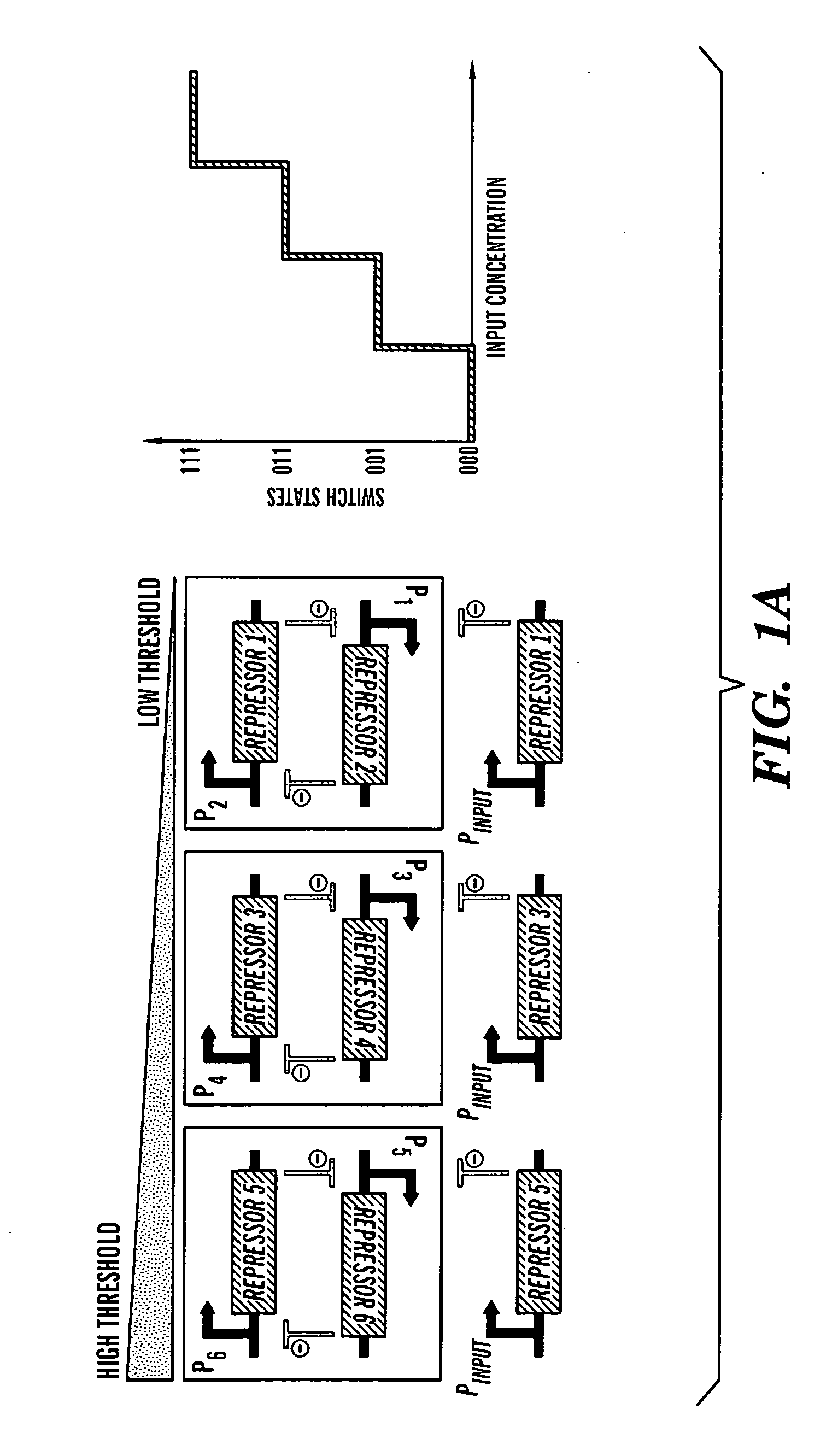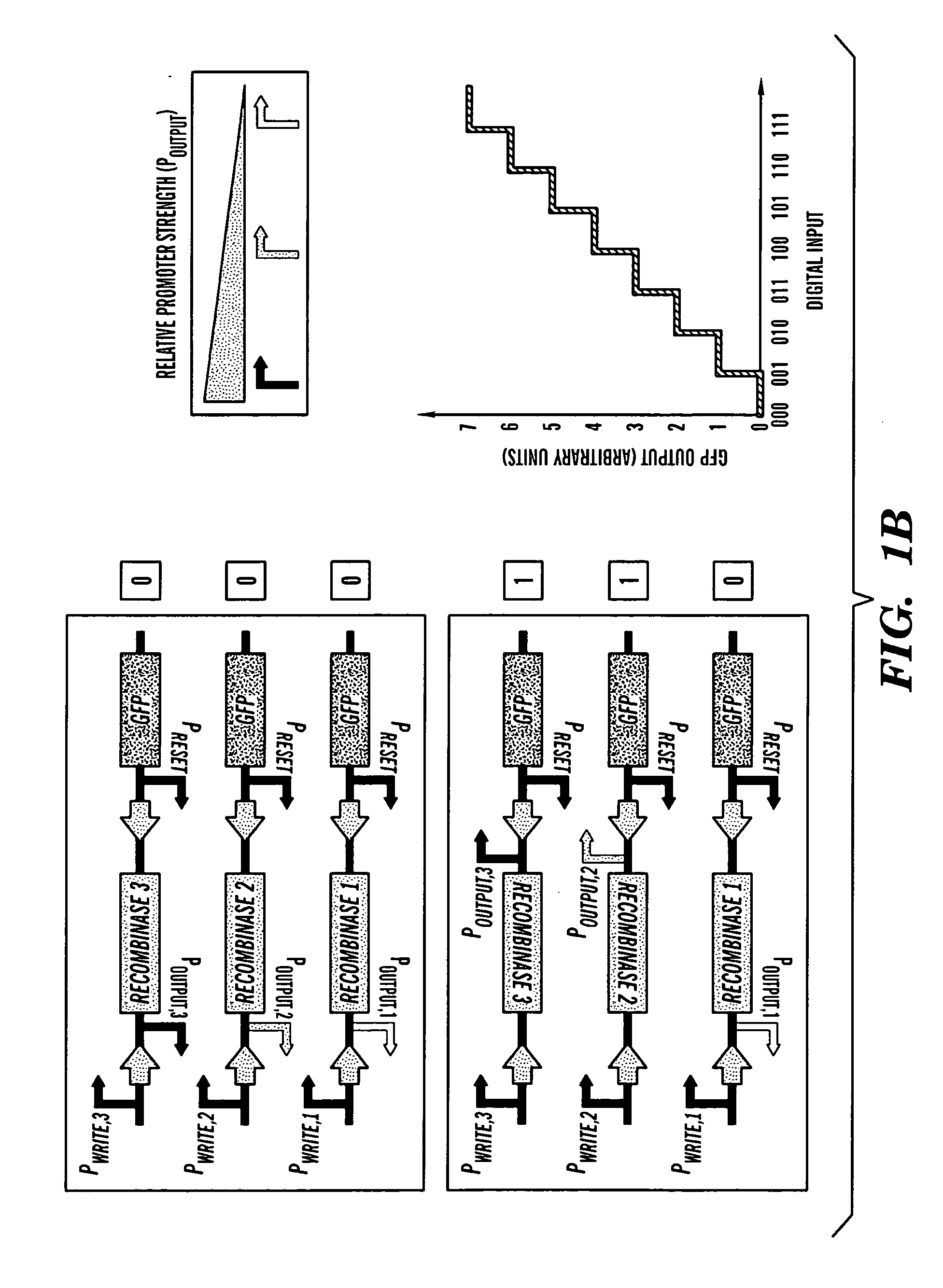Biological analog-to-digital and digital-to-analog converters
a converter and analog technology, applied in the field of biological converter switches, can solve the problems of difficult to replicate the versatility and flexibility of standard electronic circuits, difficult to control the state of cells, and low utility of these circuits
- Summary
- Abstract
- Description
- Claims
- Application Information
AI Technical Summary
Benefits of technology
Problems solved by technology
Method used
Image
Examples
examples
[0315]Synthetic biologists have engineered a wide range of functionality into living systems, including the genetic toggle switch1 and repressilator2, genetic switches1, 3-8, oscillators2, 9-11, digital logic evaluators12, 13, counters14, filters15-17, sensors18-20, and cell-cell communicators16, 18, with varying degrees of success. These functionalities have been demonstrated in proof-of-principle applications, such as in bacteria that invade cancer cells21, engineered bacteriophages that break up biofilms22 or enhance antibiotic treatments23, and synthetic microbial pathways that enable the production of antimalarial drug precursors24. However, for all of its successes, many more challenges remain in advancing synthetic biology from low-level gene circuitry to higher-order networks. Herein, we describe the development of novel and useful analog-to-digital and digital-to-analog biological converter switches for use as, and as part of, engineered biological circuits, and the utility...
PUM
 Login to View More
Login to View More Abstract
Description
Claims
Application Information
 Login to View More
Login to View More - R&D
- Intellectual Property
- Life Sciences
- Materials
- Tech Scout
- Unparalleled Data Quality
- Higher Quality Content
- 60% Fewer Hallucinations
Browse by: Latest US Patents, China's latest patents, Technical Efficacy Thesaurus, Application Domain, Technology Topic, Popular Technical Reports.
© 2025 PatSnap. All rights reserved.Legal|Privacy policy|Modern Slavery Act Transparency Statement|Sitemap|About US| Contact US: help@patsnap.com



